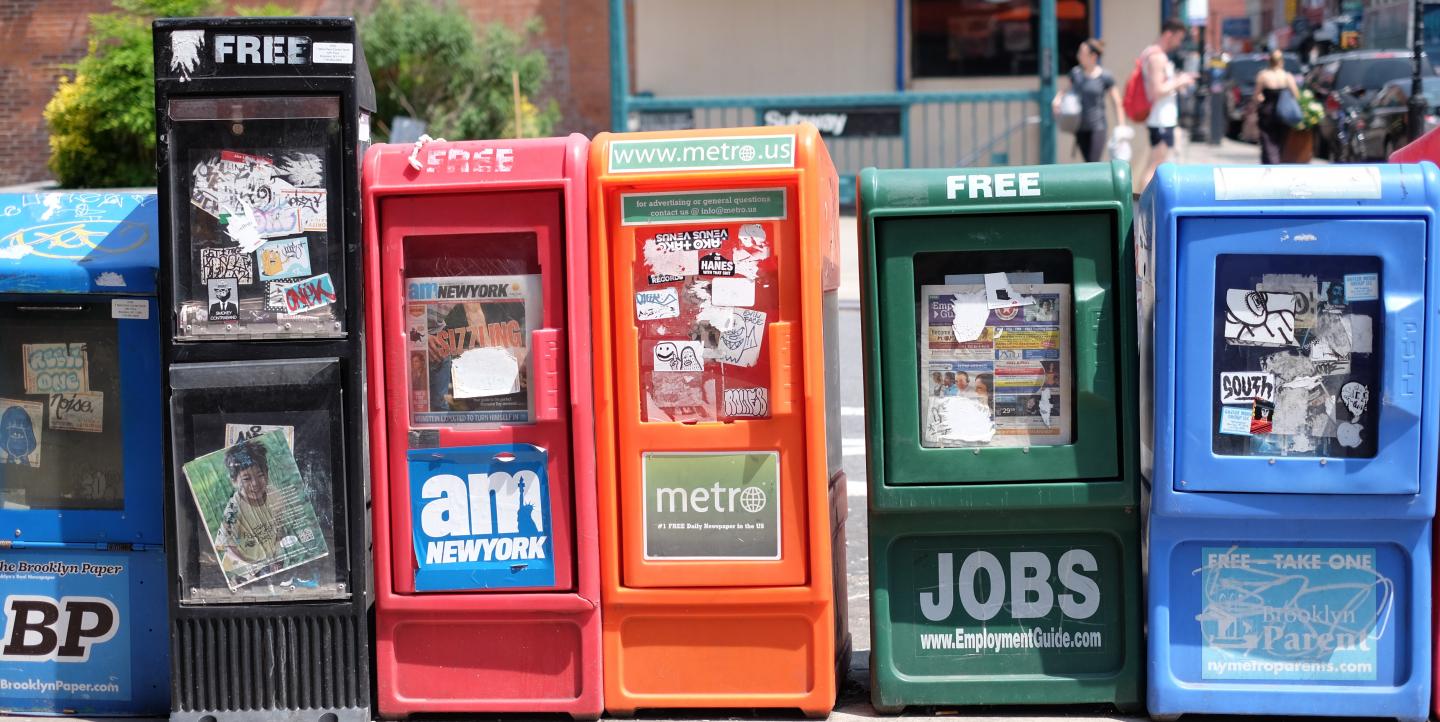Inside the news industry and Nieman Lab World, the fate of local news stands out as a particularly scary problem. Outside our bubble, however, people aren’t all that worried about it, according to a report released Tuesday by the Pew Research Center.
Pew surveyed about 35,000 U.S. adults (an unusually large sample size for them, which allowed them to also release an interactive tool that lets users delve into the local news environments in 99 regions across the U.S.) The report covers a range of material from trust in local news to most-wanted topics to the role of social media. Here are some of the topline findings I found most interesting.
Americans believe that local news is doing well financially, and few are paying for it.
A remarkable 71 percent of those surveyed believe that “their local news outlets are doing very or somewhat well financially.” Only 14 percent have paid for or given money to local news of any kind — print, digital, public radio pledge drive, anything — in the past year.
“There’s really a disconnect there between the public’s knowledge and understanding about the industry and how it’s functioning, compared with what we see in headlines day in and day out about budget cuts and revenue declines,” said Amy Mitchell, Pew’s executive editor of journalism research, in a briefing last week. She noted that the industry attempt to educate consumers “seems to largely have gone unheard.”

This is possibly less surprising if you keep in mind that many Americans think of “local news” as “TV,” and TV is doing a lot better than newspapers: 77 percent of those surveyed say TV is doing “very” or “somewhat well” financially; 64 percent say the same of print, and people who prefer print are also the more likely to pay for news:
A third of those who prefer print think their local news media are not doing well financially. That is almost double the 18 percent of those who prefer news via the television set that feel this way…
About four-in-ten of those who prefer print (39 percent) pay for news through a subscription, donation or membership. That is more than double that of any other group — and nearly four times the 10 percent of those who prefer to get local news from TV, and the 8 percent who prefer to get local news via social media.
Here are the reasons Americans give for not paying up:

Americans still prefer to get local news from TV, but online is close.
Pew also splits this up by type of provider. Note the very low percentage of people who “ever” get news from “online-only” sources, i.e. those innovative digital-native local news orgs that are often perceived as bright spots in the industry:
At the bottom of the list — and the only provider that fewer than half ever use for news — is online-only news sources, such as local blogs or nonprofit online news startups.

Weather rules.
Americans overwhelmingly (70 percent) say that “weather” is the most important local news topic to follow in their daily lives; they also find weather easy to keep up with via local news. But Pew points out — local news startup founders, take note! — there are also topics that Americans rank as highly important but also difficult to stay informed about:
Take the topic of changing prices. About four-in-ten Americans (37 percent) say information about prices is important to follow for their daily lives. However, only a quarter of those who are at least interested in the topic say it is very easy to stay informed about it.

Local sometimes just means “local.”
About half — 47 percent — of Americans say their local news media “mostly covers another area, such as a nearby city”; 51 percent say it mostly covers the area where they live. That 51 percent who say it covers the area where they live also give it higher ratings on accuracy, trustworthiness, transparency, and fairness.
Who prefers social media for local news?
Overall, 15 percent of U.S. adults say that social media is their “preferred pathway to local news” (13 percent, meanwhile, prefer print newspapers). Those who prefer social media for news tend to come from areas that have a higher proportion of younger residents, that have a higher proportion of black and Hispanic residents, and that have lower voter turnout. The people who prefer to get news from social media also tend to be younger, Hispanic, and not registered to vote, and they prefer to get news online via mobile phone.

The entire report, as well as an interactive tool, can be found here. It received funding from the Google News Initiative.
This article was originally published by Nieman Lab. It was republished on IJNet with permission.

